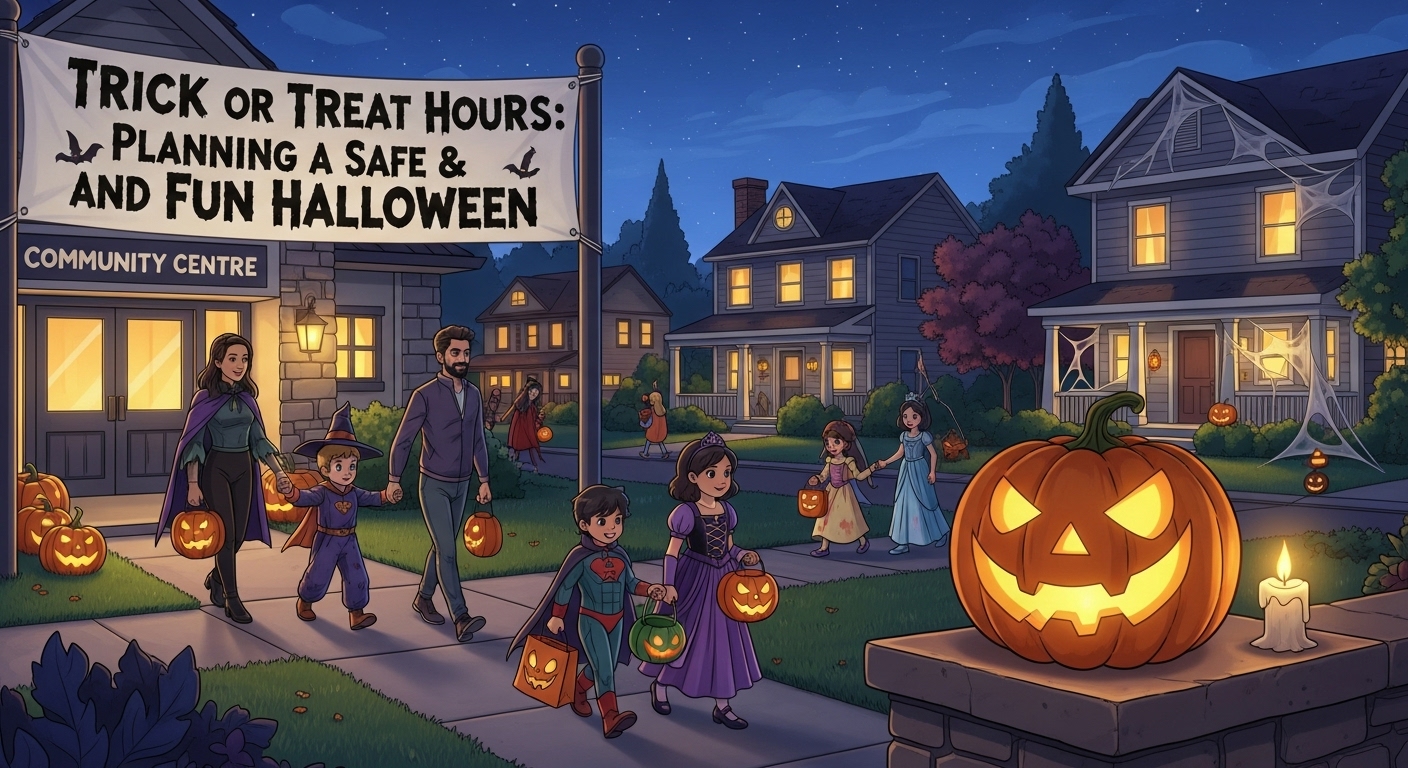In today’s rapidly evolving world, family traditions are being reimagined to balance fun, safety, and community engagement. Halloween is a prime example. While costumes, candy, and decorations remain central, the timing of trick-or-treating has become an essential consideration for families. Knowing the right trick or treat hours ensures children enjoy a safe and festive experience while giving neighbors the opportunity to participate responsibly.
This article explores why trick or treat hours matter, how communities set them, and tips for maximizing safety and enjoyment during Halloween festivities.
Understanding Trick or Treat Hours
Trick-or-treating is more than a fun Halloween activity—it’s a ritual that brings neighborhoods together. Traditionally, families walk from house to house collecting candy, often in the early evening. However, exact timing varies by community, with many cities and towns officially designating trick or treat hours to balance excitement with safety.
By standardizing these hours, communities aim to:
-
Ensure children trick-or-treat during daylight or early evening hours.
-
Minimize traffic-related hazards on busy streets.
-
Provide consistency for residents who want to hand out candy.
Knowing the official hours is especially important for families with young children, seniors handing out treats, and parents managing multiple kids.
Why Trick or Treat Hours Matter
Families today are more aware than ever of safety and inclusivity, making trick or treat hours an essential part of Halloween planning. Key reasons include:
1. Safety for Children
Evening hours can quickly turn dark and unpredictable. Designated times help parents plan for adequate supervision, reflective clothing, and safe routes.
2. Community Coordination
When residents know official hours, everyone is on the same page—doors are open, lights are on, and households can participate without confusion.
3. Legal Considerations
Some municipalities enact ordinances specifying Halloween trick-or-treat hours to prevent trespassing, reduce liability, and ensure public safety.
4. Inclusivity and Accessibility
Structured hours allow children with sensory sensitivities, mobility challenges, or younger ages to participate fully without pressure.
Typical Trick or Treat Hours
While exact times differ depending on location, there are common guidelines across the United States:
-
Early Evening (5:30 PM – 7:30 PM): Ideal for younger children and families with toddlers.
-
Evening (6:00 PM – 8:30 PM): Commonly recommended for older children who enjoy longer trick-or-treating routes.
-
Late Evening (after 8:30 PM): Generally discouraged for younger children, but older teens sometimes participate, often in supervised groups.
Many local governments post trick or treat hours on city websites or social media, making it easy for residents to check the schedule.
How Communities Set Trick or Treat Hours
Municipalities, homeowner associations, and neighborhood committees often collaborate to determine official hours. Considerations include:
-
Sunset times: Maximizing daylight reduces risk of accidents.
-
Traffic patterns: Choosing periods with less congestion improves safety.
-
Volunteer availability: Ensuring residents and community groups can participate.
-
Local events: Aligning with school festivals, parades, and trunk-or-treat events.
By providing clear guidelines, communities help ensure Halloween is fun for everyone while reducing potential conflicts or misunderstandings.
Tips for Safe Trick-or-Treating
Even when you know the official trick or treat hours, safety remains paramount. Families can take simple steps to enhance their Halloween experience:
-
Plan Your Route – Map out streets in advance and stick to well-lit areas.
-
Check Costumes – Ensure visibility with reflective tape and comfortable shoes.
-
Supervise Young Children – Adults or responsible teens should accompany young participants.
-
Follow COVID and Allergy Guidelines – Some households provide pre-packaged candy or allergy-friendly options.
-
Respect the Hours – Arriving outside designated hours may disturb neighbors or violate local ordinances.
By observing these tips, families can enjoy a seamless and joyful Halloween experience.
The Role of Digital Tools
In the digital era, families increasingly rely on technology to plan trick-or-treating during official hours. Searching online for trick or treat hours allows parents to:
-
Locate local events like trunk-or-treats, school parties, and community festivals.
-
Check real-time updates if events are postponed or rescheduled due to weather.
-
Engage with neighborhood apps to confirm candy availability, Halloween routes, and local safety measures.
This digital approach enhances both convenience and security, helping families maximize fun while staying informed.
Beyond Candy: Creating Meaningful Halloween Experiences
Modern Halloween celebrations go beyond candy collection. When families observe trick or treat hours, they can also:
-
Attend trunk-or-treat events for a more interactive experience.
-
Participate in costume contests hosted by schools or community centers.
-
Engage in charitable giving, such as collecting canned goods or donating leftover candy.
-
Document memories safely with photos and videos shared digitally rather than crowding sidewalks.
These additions make Halloween more than a night of sweets—it becomes a celebration of creativity, community, and shared traditions.
A Model for Family-Centered Celebration
Structured trick or treat hours reflect a broader trend in family-centered planning. They allow communities to:
-
Balance fun and safety without restricting creativity.
-
Foster connections among neighbors, schools, and local organizations.
-
Encourage inclusivity so children of all abilities can participate.
Much like modern leaders who blend purpose with performance, families today aim to blend tradition with responsibility—ensuring Halloween remains enjoyable and meaningful.
Challenges and Opportunities
Even with designated hours, challenges remain:
-
Weather concerns may shift trick-or-treat times unexpectedly.
-
Older kids and teens may prefer longer or later participation, conflicting with official hours.
-
Neighborhood awareness can vary, requiring communication to ensure all households are informed.
These challenges also present opportunities. Community planners can:
-
Use social media to provide real-time updates.
-
Organize alternate events like trunk-or-treat for extended participation.
-
Promote educational elements like neighborhood safety walks or Halloween-themed storytelling.
Looking Ahead
As families continue to rely on trick or treat hours for planning, the tradition of Halloween will keep evolving to meet modern needs. Future trends may include:
-
Digital mapping of local trick-or-treat routes.
-
Hybrid celebrations combining door-to-door visits with trunk-or-treat and community events.
-
Enhanced inclusivity, with sensory-friendly hours and allergy-aware treats.
At its heart, Halloween remains a celebration of imagination, community, and joy. Observing trick or treat hours ensures children enjoy the holiday safely, while neighbors and organizers can participate confidently.
By planning ahead and respecting designated hours, families contribute to a seamless, fun, and memorable Halloween experience.

